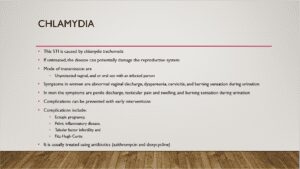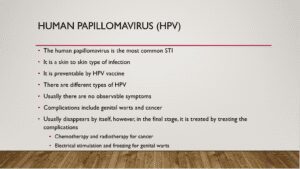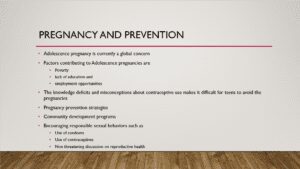Adulthood and Sexuality
Puberty is when a child’s body begins changing as they grow into adulthood. In girls, it starts after their 8th birthday and after the 9-10th birthday in boys. This is always a result of the secretion of the gonadotropin-releasing hormone (GnRH) by the hypothalamus. The hormone stimulates the pituitary gland to release follicle-stimulating hormone (FSH) and luteinizing hormone (LH). In boys, these two pituitary hormones stimulate the production of sperm and testosterone hormone.
In contrast, in girls, it stimulates the maturation of the ovaries to produce ova and secretion of estrogen hormone that prepares them for pregnancy. These changes happen concurrently with the action of adrenal glands in both girls and boys to produce adrenal androgen hormones that stimulate the growth of pubic hairs. Other normative changes are enlargement of the testicle, growth spurt between ages 10-16 years, broadening of the shoulders, tenderness, and swelling of the nipples, and hoarseness of voice for boys. In girls, these changes include breast enlargement, widening of the hips, and menarche (first period of menstruation) (Hoff et al., 2018).
Adolescence, meaning growing up, is a critical period for development as it is characterized by major normative biological and psychological development. It can be divided into three broad stages, namely, early adolescence (10-13 years), middle (14-16 years), and late (17-19 years). It is also at this stage that a child begins to develop sexuality, which is an important aspect of their bio-psycho-social development. At this period, an individual gets to color their perception, thoughts, and responses sexually. This sexual coloration is due to the immense emotional stress that they have been exposed to due to the myriad normative changes. The biological factors are made up of neuroendocrinal and genetic factors, including various hormones such as gonadal and cortisol hormones (Zani and Cicognani, 2020).
Gonorrhea is a sexually transmitted disease caused by Neisseria gonorrhoeae bacteria. The medium of entry is warm moist body areas, including the urethra, throat, vagina, anus, and eye. The infection can be passed through vaginal, anal, and oral sex without a condom or other barrier method. Usually, the symptoms occur within 1-14 days of exposure, and they include fatigue, burning sensation during urination, increased urination frequency, pus-like discharge from the penis and vagina, testicular pain and swelling, pain during intercourse, and heavy periods in ladies. If left untreated, girls are at a greater risk of long-term complications compared to boys. These complications are pelvic inflammatory disease, ectopic pregnancy, infertility in men, arthritis, and damage to the heart valves. Gonorrhea can be cured using antibiotics (ceftriaxone and azithromycin) (Shannon and Klausner, 2018).
This is a common sexually transmitted disease for both men and women that causes serious damage to the women’s reproductive system if left untreated. This disease is caused by chlamydia trachomatis. This disease is usually spread through having unprotected vaginal, anal, or oral sex with an infected person. For women, the symptoms include abnormal vaginal discharge, dyspareunia, cervicitis, and a burning sensation during urination. In contrast, in men, the symptoms are penile discharge, testicular pain and swelling, and a burning sensation during urination. With early initiation of treatment, chlamydia-related complications can be prevented. Its treatment includes azithromycin and doxycycline. Complications include ectopic pregnancy, pelvic inflammatory disease, tubular factor infertility, and Fitz-Hugh-Curtis (Shannon and Klausner, 2018).
This is a sexually transmitted disease caused by the herpes simplex virus (HSV). The primary mode of transmission is through sexual contact with an infected person. Initially, after the infection, the virus usually remains dormant within the body and can reactivate several times within a year. The signs and symptoms are pain and itching of the genitalia, small red bumps, ulcers, and scabs in the genitalia. The symptoms can also be noticed in the buttocks, thighs, anus, mouth, and urethra. If left untreated, it can result in the following complications: increased risk for other STIs, newborn infections, meningitis, and proctitis. It is usually treated with antiviral medications such as acyclovir and valacyclovir (Valtrex) (Shannon and Klausner, 2018).
The human immune deficiency virus (HIV) is a sexually transmitted infection that targets and weakens the immune system against many opportunistic diseases such as cancer. The pathogens that cause HIV can replicate inside a living cell of the host. There are two types of HIV viruses i.e., HIV 1, which is the most common type in sub-Saharan Africa and throughout the world, while HIV 2 is mostly found in the west-central Africa parts of India and Europe. As HIV destroys and impairs immune functions, the infected individuals progressively become immunodeficient. Usually, the immune function is measured by CD4 cell count. Acquired immunodeficiency syndrome (AIDS) is the most advanced stage of HIV infection, and depending on the individual, it may take several years to develop if left untreated.
This disease is transmitted through sexual intercourse with infected persons, blood transfusion, and sharing of cutting objects with infected people. It can also be passed through the exchange of body fluids, such as breast milk, from mother to child during childbirth. The signs and symptoms of HIV usually tend to vary depending on the stage of infection, with no symptoms seen during the first few weeks of infection. However, as the disease progresses, symptoms such as swollen lymph nodes, loss of weight, diarrhea, fever, and cough. Without treatment, HIV patients can develop tuberculosis, severe bacterial infection, cryptococcal meningitis, and cancer such as Kaposi’s sarcoma. Currently, there is a cure for HIV infection; however, with the current advancement in medicine for opportunistic infections, HIV has become a manageable chronic disease. A treatment regimen made up of a combination of three or more antiretroviral drugs can be used to suppress the replication of the virus in the body (Shannon and Klausner, 2018).
This is a sexually transmitted infection caused by spirochete treponema pallidum. This disease is transmittable through sexual contact, utero mother to fetus, blood transfusion, and skin contact with infectious lesions. The condition can progress to 4 stages if left untreated. These stages are primary, secondary, latent, and tertiary. The first symptom is a small, painless sore. Other symptoms are skin rash, fever, weight loss, headache, and fatigue in the mouth and vagina. If left untreated, it can result in the following complications; meningitis, dementia, stroke, heart disease, congenital disabilities such as seizures, and mental retardation if the infection is passed to the newborn. In severe cases, it can result in death. Syphilis is usually treated with broad-spectrum antibiotics such as penicillin. In the latent stage, the drug of choice is usually doxycycline.
Human papillomavirus (HPV) is a vaccine-preventable sexually transmitted disease. The human papillomavirus vaccine can prevent it. It is the most commonly transmitted STD. There are different types of HPV, with some types capable of causing other health conditions such as genital warts and cancer. This is a skin-to-skin type of infection. The virus can be spread from one person to another while having oral, anal, or vaginal sex with an infected person. In the majority of cases, the HPV usually disappears on its own. However, in cases in the later stages of the disease, it is generally treated by addressing the complications, such as using electrical currents and freezing with liquid nitrogen to manage the genital wart and the use of chemotherapy and radiation therapy in cases of cancer (Shannon and Klausner, 2018).
Pregnancy among adolescents has become a global concern in developing and developed countries. However, these pregnancies are always driven by poverty, employment opportunities, and lack of education and are mostly seen in marginalized communities. Many factors can contribute to adolescent pregnancy and birth. These include community pressure to marry off their children and pressure to bear children. The gap in knowledge and misconceptions about contraceptives in these societies for adolescents who want to avoid pregnancies make it difficult for them to prevent these pregnancies (Kiani et al. 2019). Pregnancy among adolescents can be prevented through promoting community development programs to improve social development, encouraging the use of contraceptives, and educating teens on responsible sexual behaviors such as the use of condoms and contraceptives. The family and healthcare providers should provide the youths with a non-threatening discussion about their reproductive health (Oman et al., 2018).
Hoff, K. A., Briley, D. A., Wee, C. J., & Rounds, J. (2018). Normative changes in interests from adolescence to adulthood: A meta-analysis of longitudinal studies. Psychological bulletin, 144(4), 426. https://psycnet.apa.org/record/2018-08207-001
Oman, R. F., Vesely, S. K., Green, J., Clements-Nolle, K., & Lu, M. (2018). Adolescent pregnancy prevention among youths living in group care homes: A cluster randomized controlled trial. American journal of public health, 108(S1), S38-S44. https://ajph.aphapublications.org/doi/abs/10.2105/AJPH.2017.304126
Kiani, M. A., Ghazanfarpour, M., & Saeidi, M. (2019). Adolescent pregnancy: a health challenge. International Journal of Pediatrics, 7(7), 9749-9752. http://eprints.mums.ac.ir/12210/
Shannon, C. L., & Klausner, J. D. (2018). The growing epidemic of sexually transmitted infections in adolescents: a neglected population. Current opinion in pediatrics, 30(1), 137. https://www.ncbi.nlm.nih.gov/pmc/articles/PMC5856484/
Zani, B., & Cicognani, E. (2020). Sexuality and intimate relationships in adolescence. In Handbook of adolescent development(pp. 200-222). Psychology Press. https://www.taylorfrancis.com/chapters/edit/10.4324/9780203969861-11/sexuality-intimate-relationships-adolescence-bruna-zani-elvira-cicognani
ORDER A PLAGIARISM-FREE PAPER HERE
We’ll write everything from scratch
Question
Design a PowerPoint presentation for high school-aged students discussing normative aging changes, sexuality, STDs, and prevention.

Adulthood and Sexuality
Discuss normal body changes that occur through puberty into young adulthood
Discuss specific STDs, causes, symptoms, complications, and treatment:
You should include a slide or two for each of the following: Gonorrhea, Chlamydia, Herpes, HIV, Syphilis, HPV
Discuss pregnancy and prevention.
The assignment should be submitted in PowerPoint format, with at least ten content slides (in addition to a title slide and reference slide), and include at least two scholarly sources other than the provided materials.













